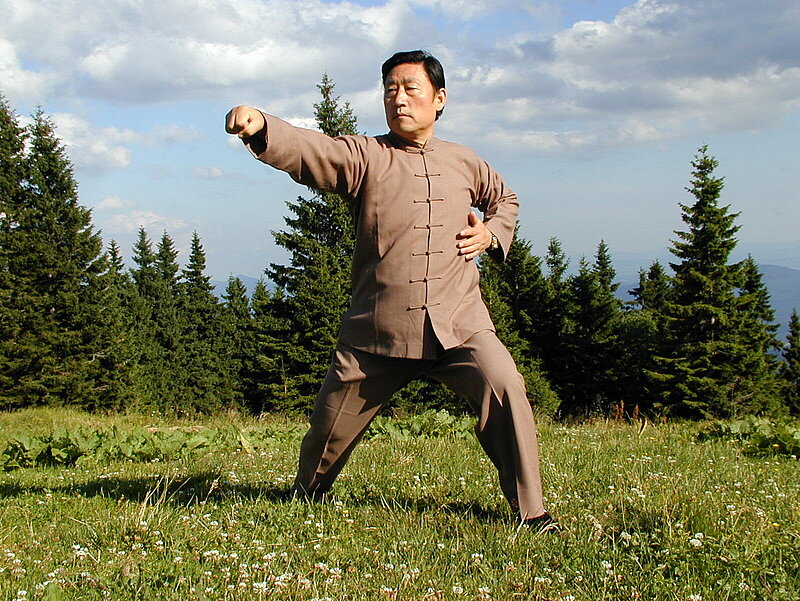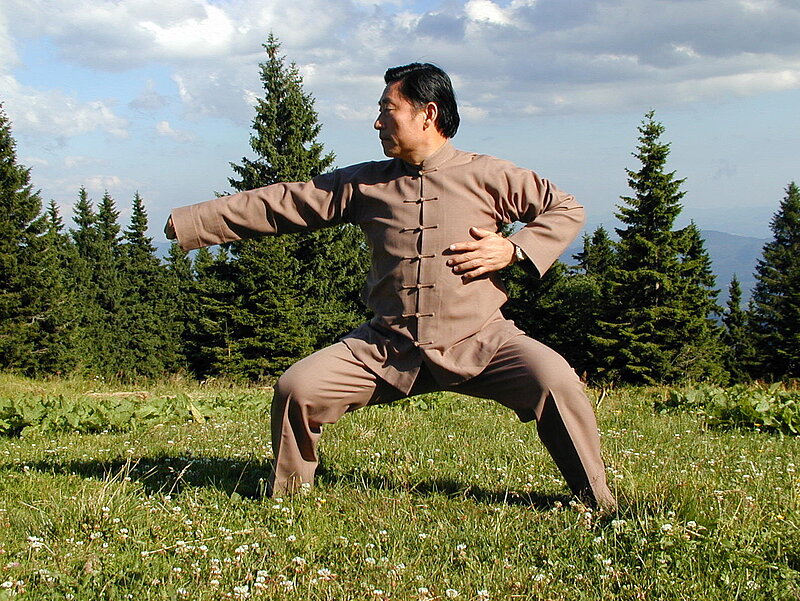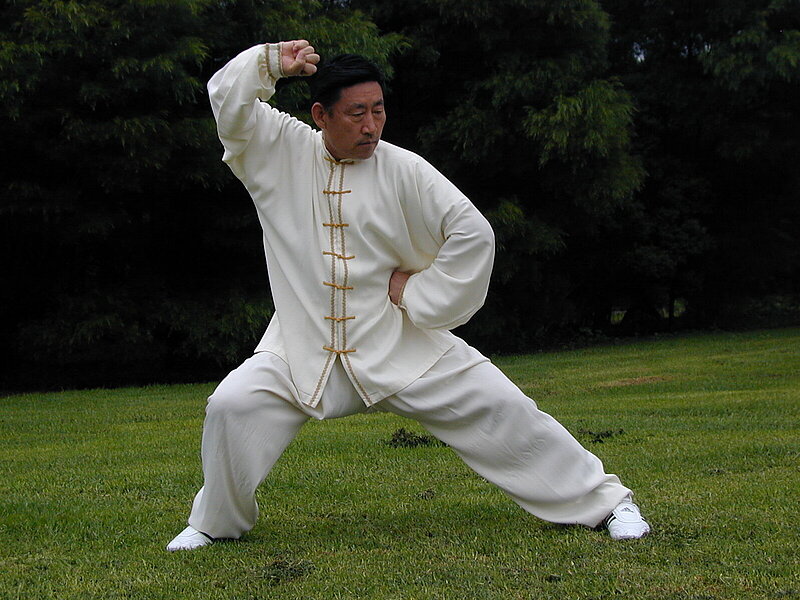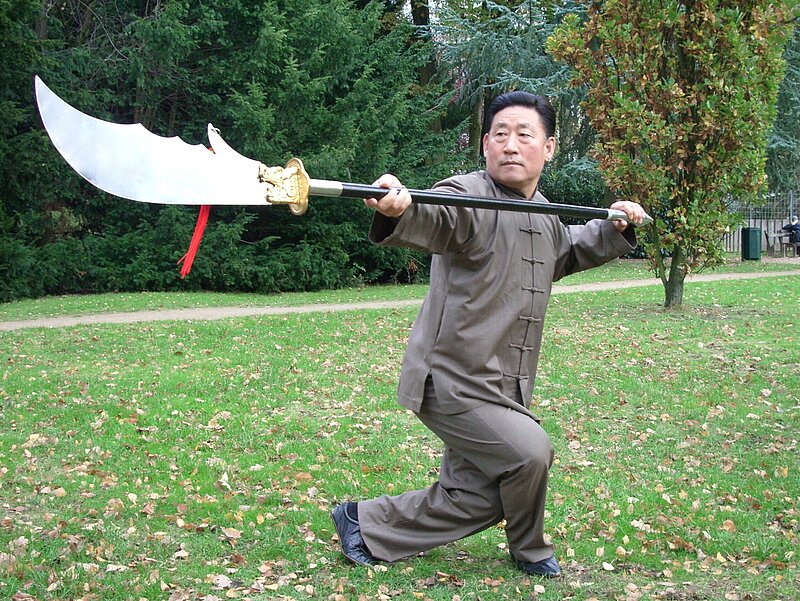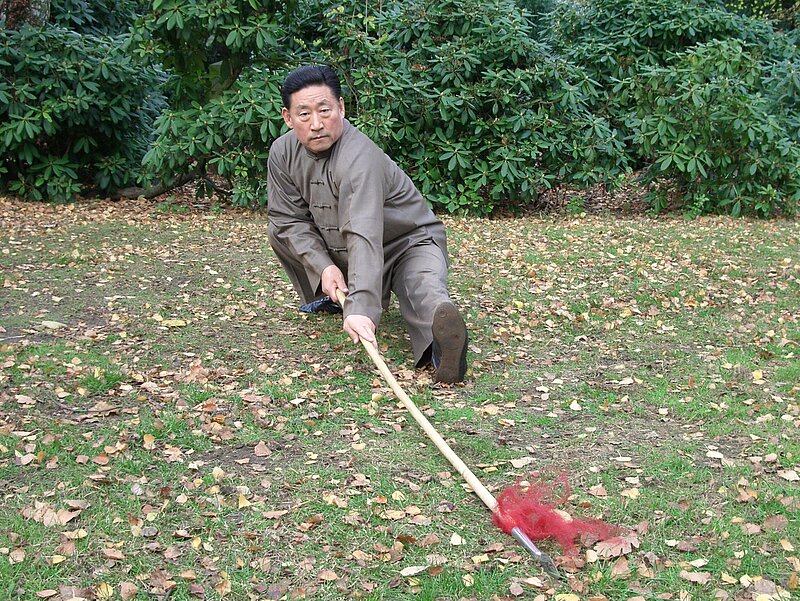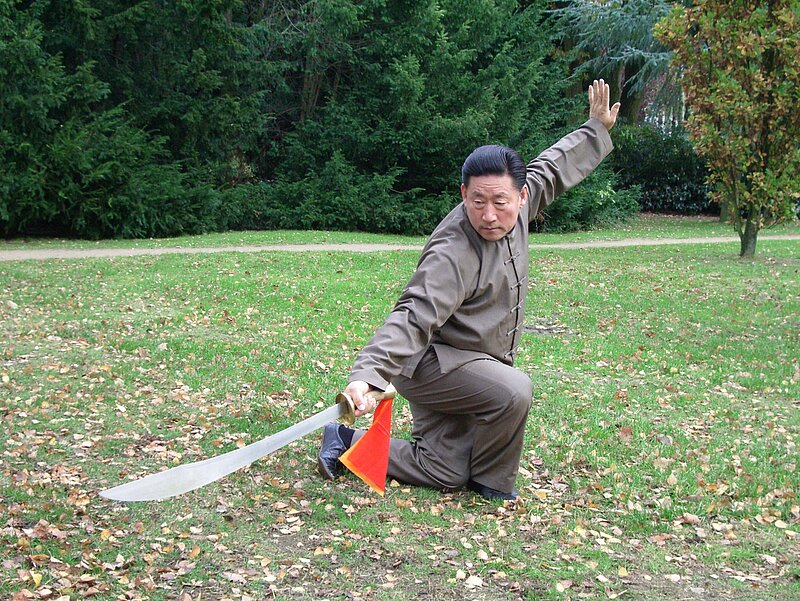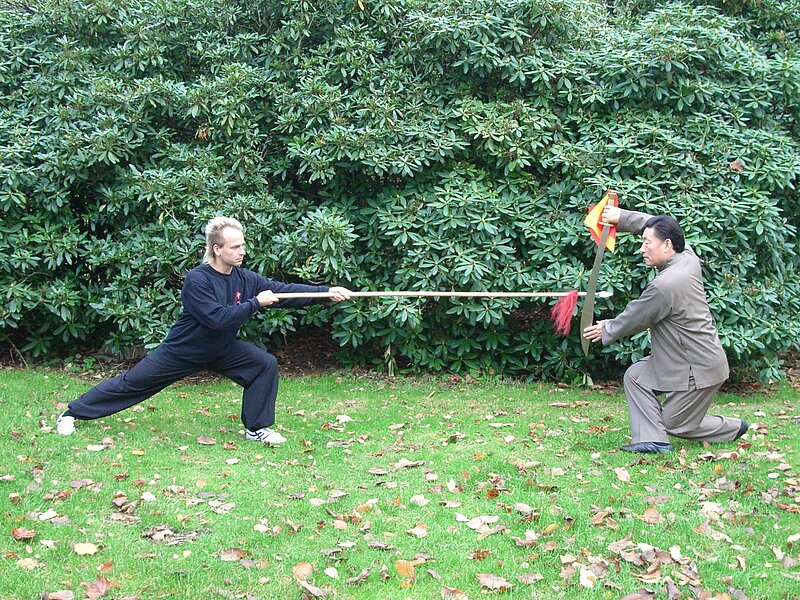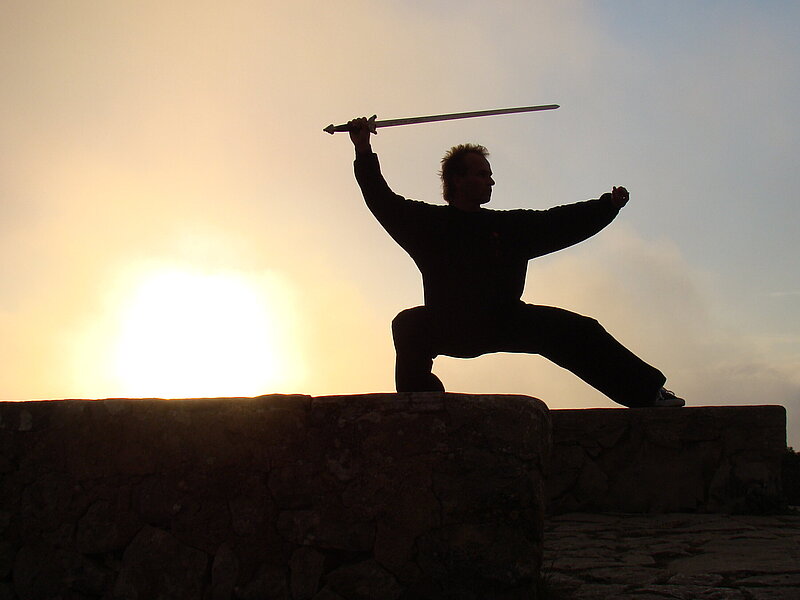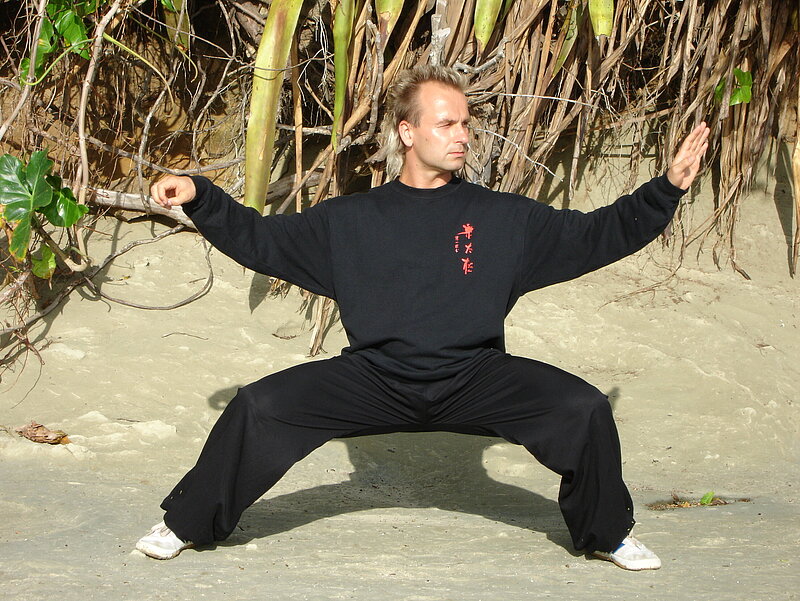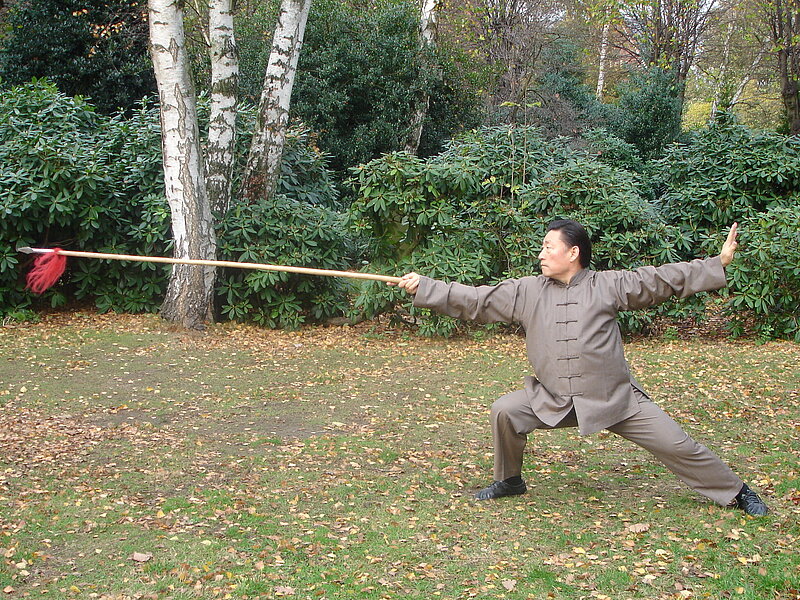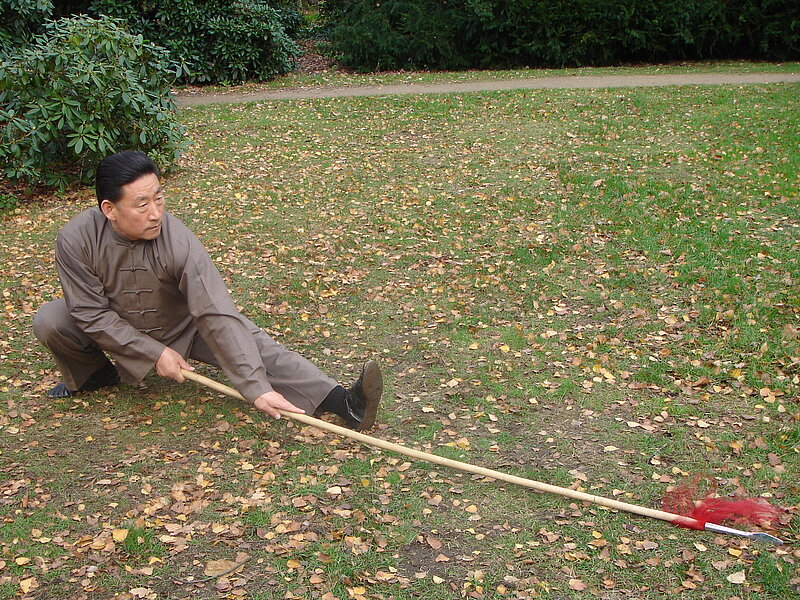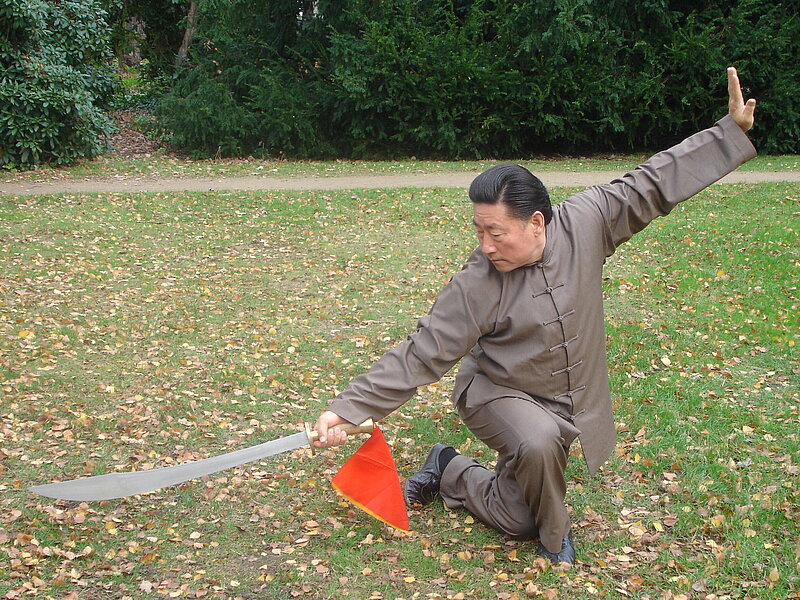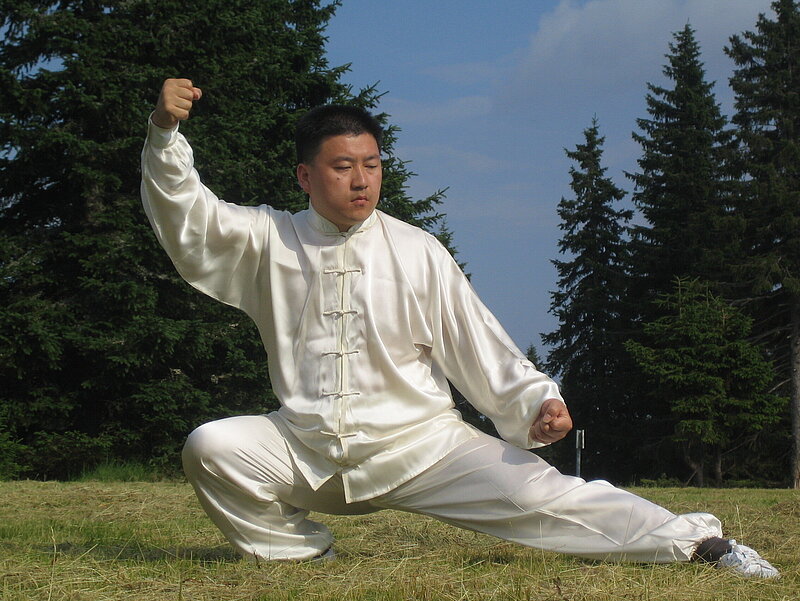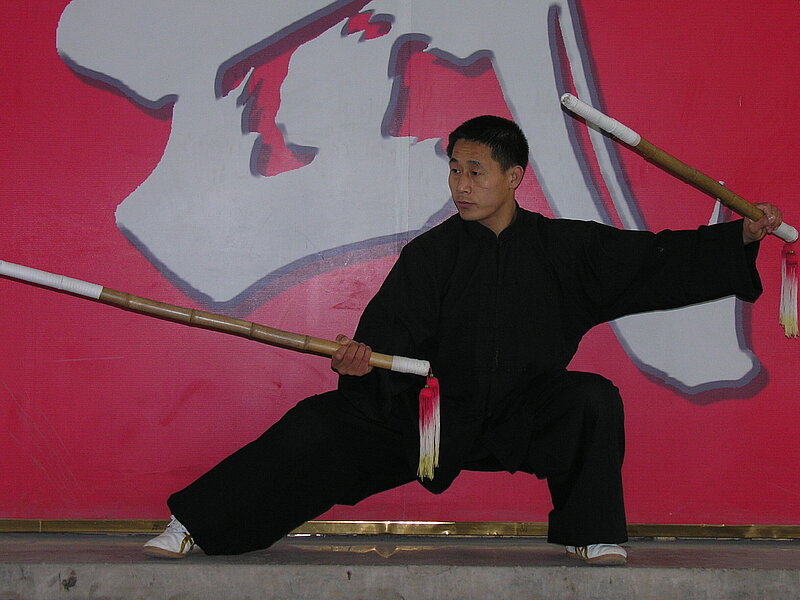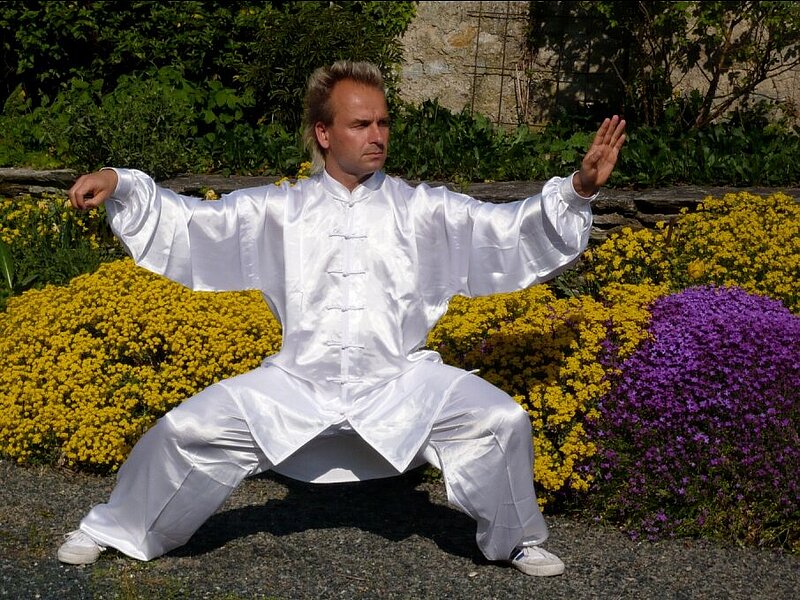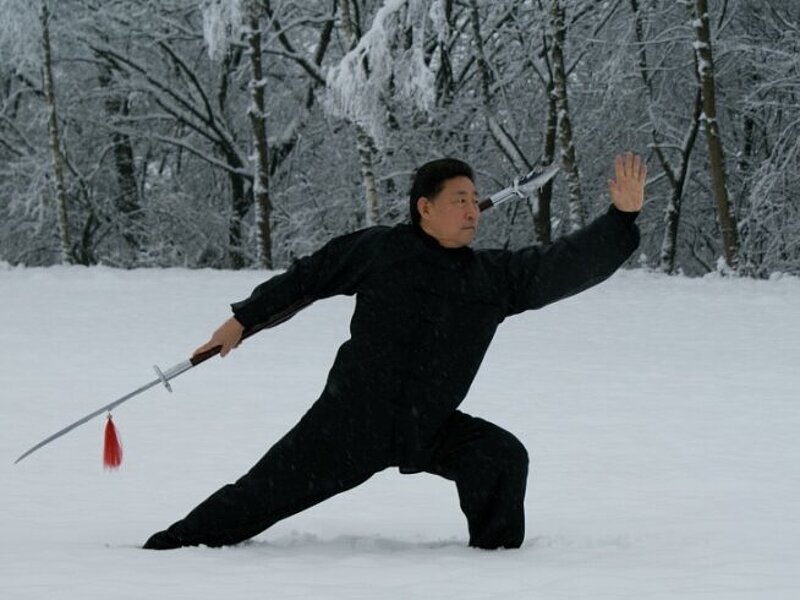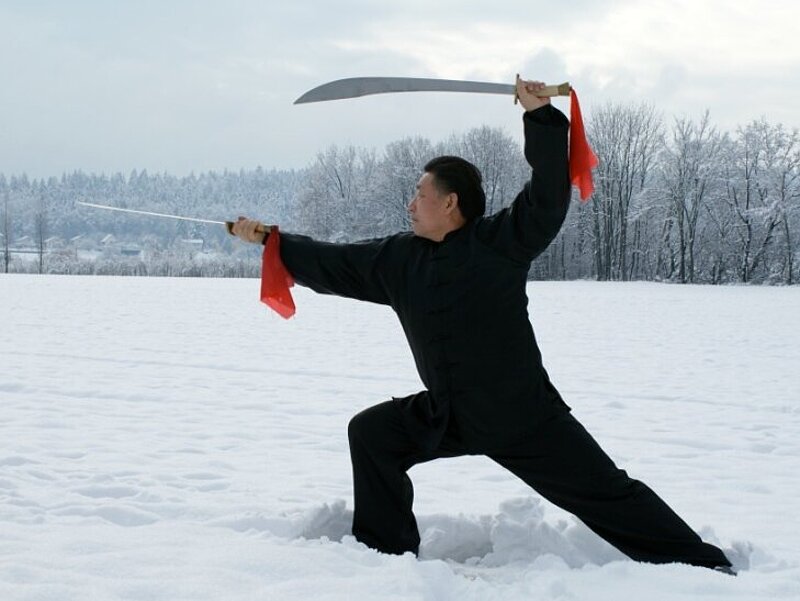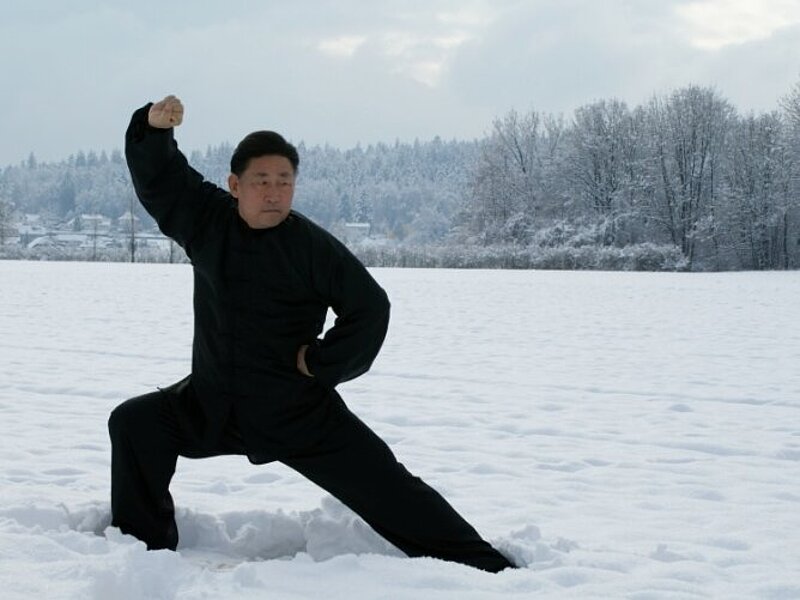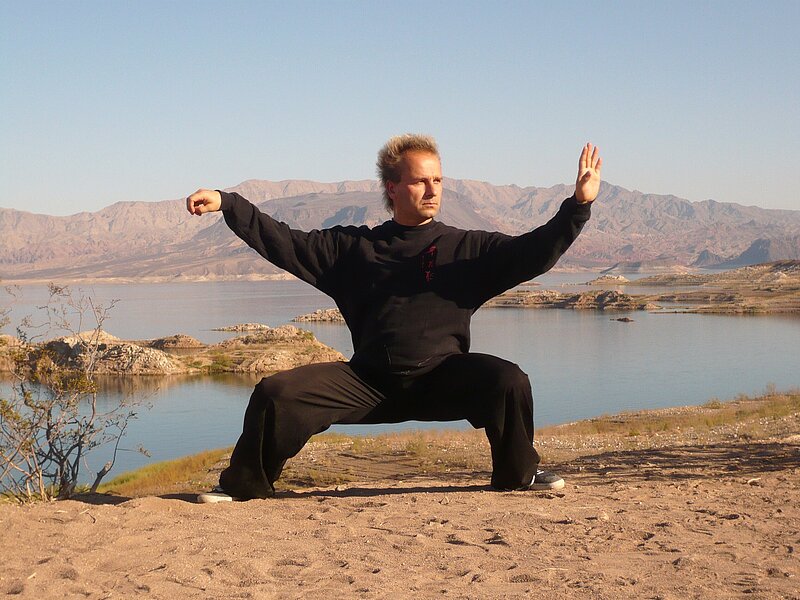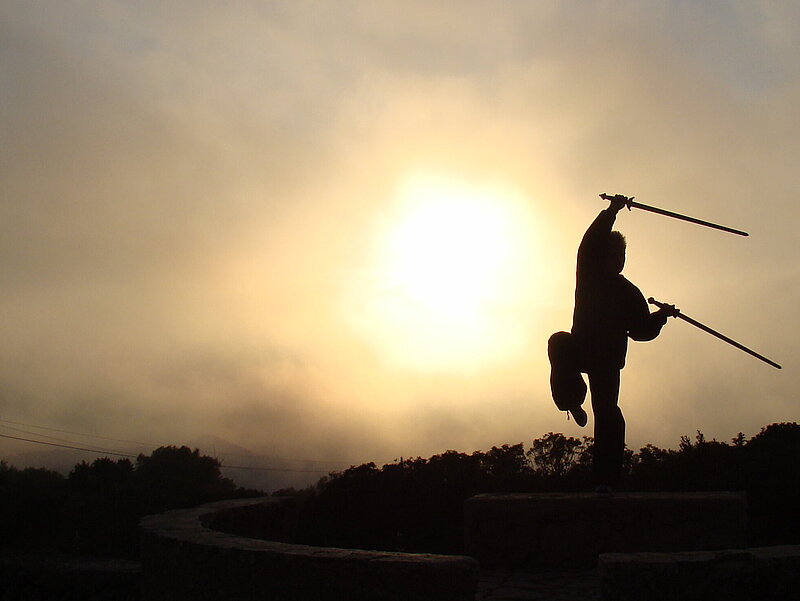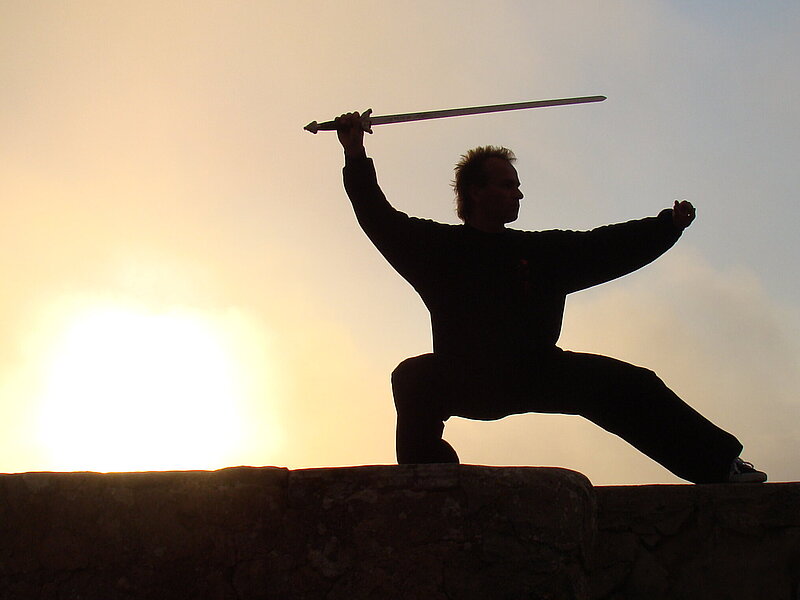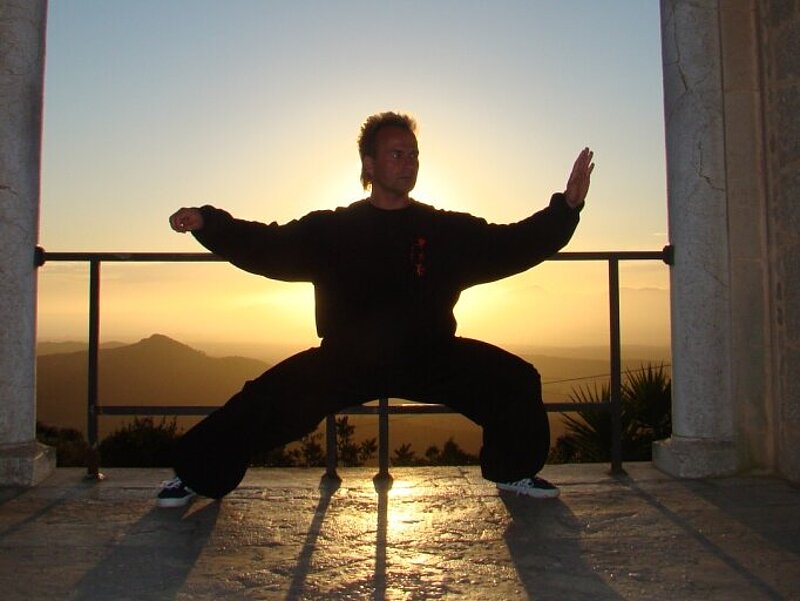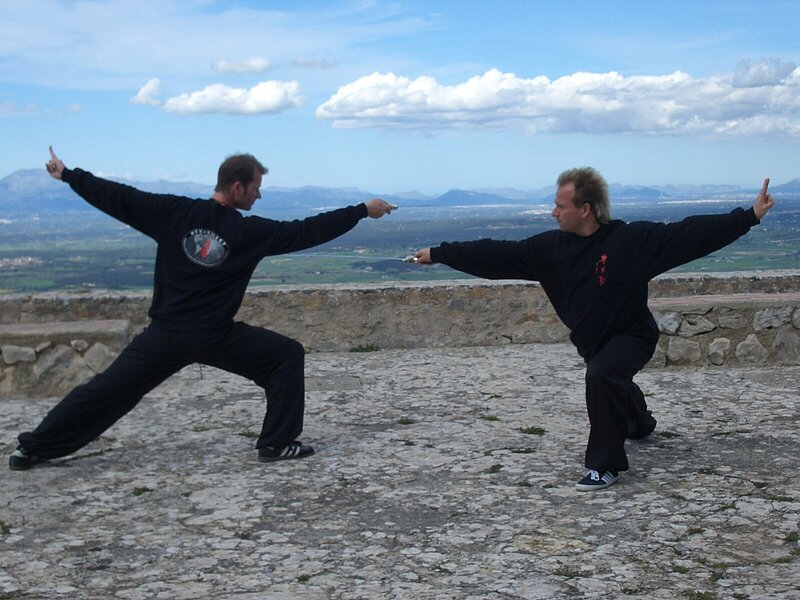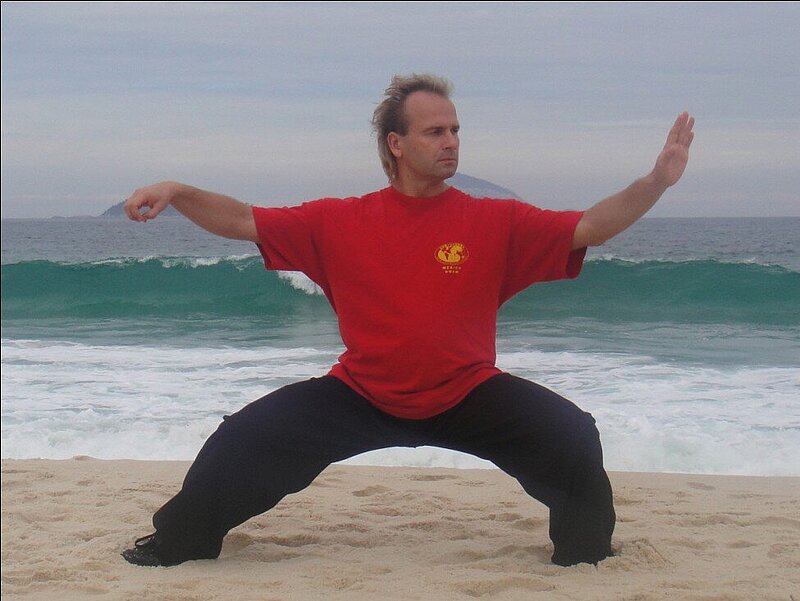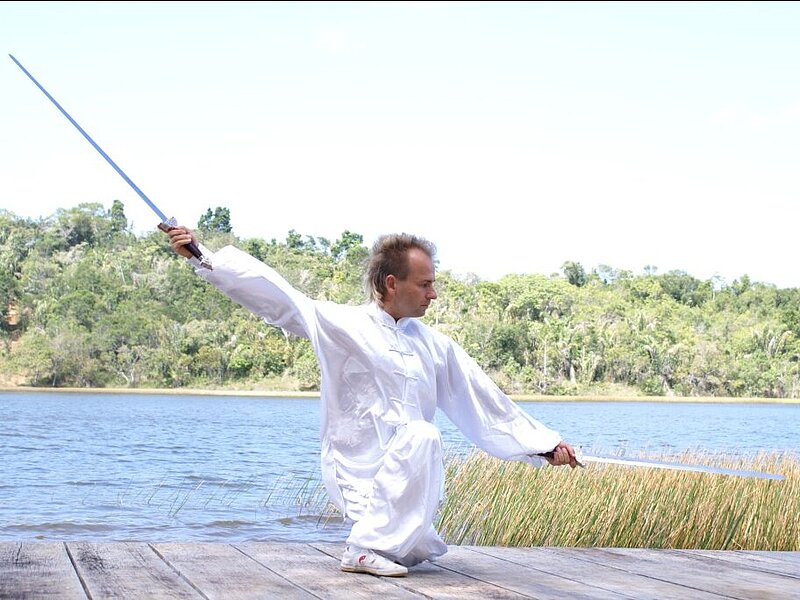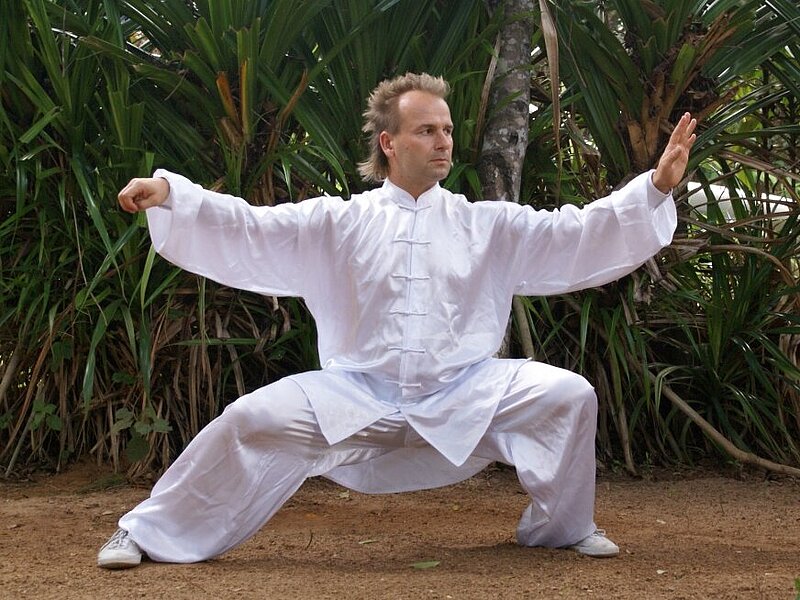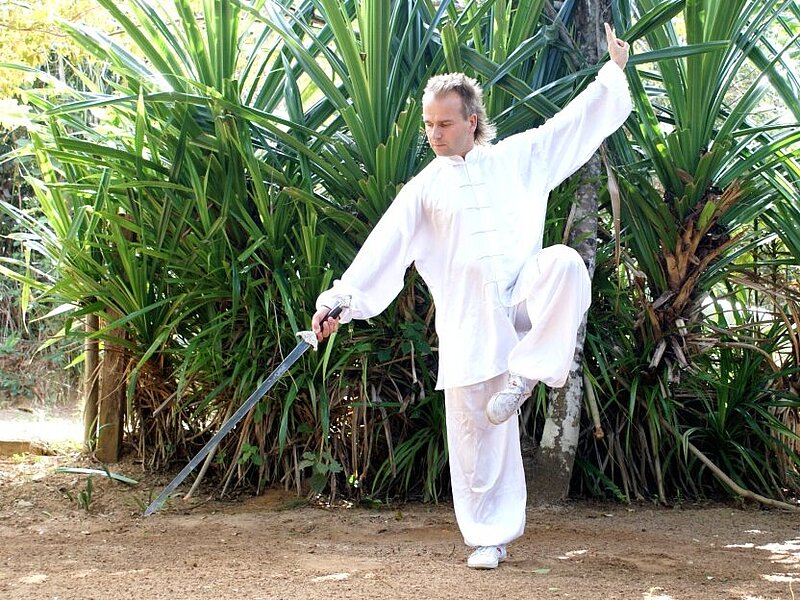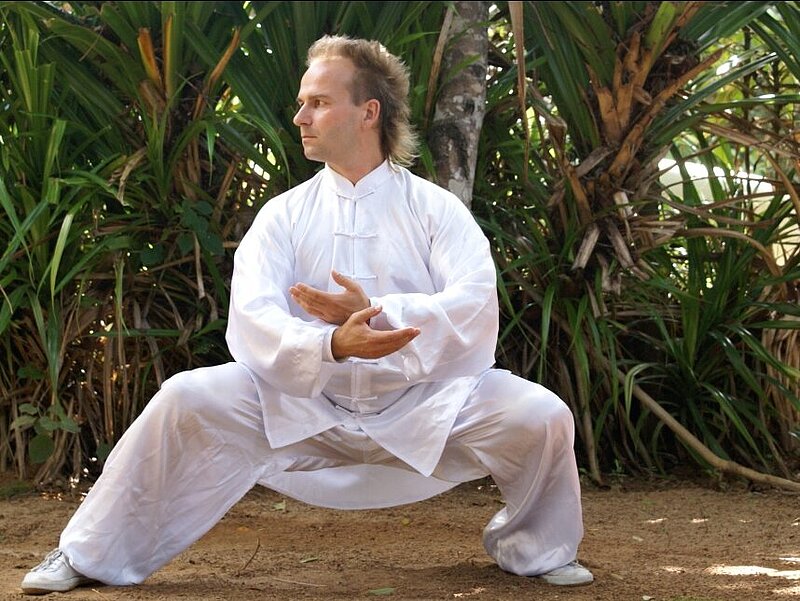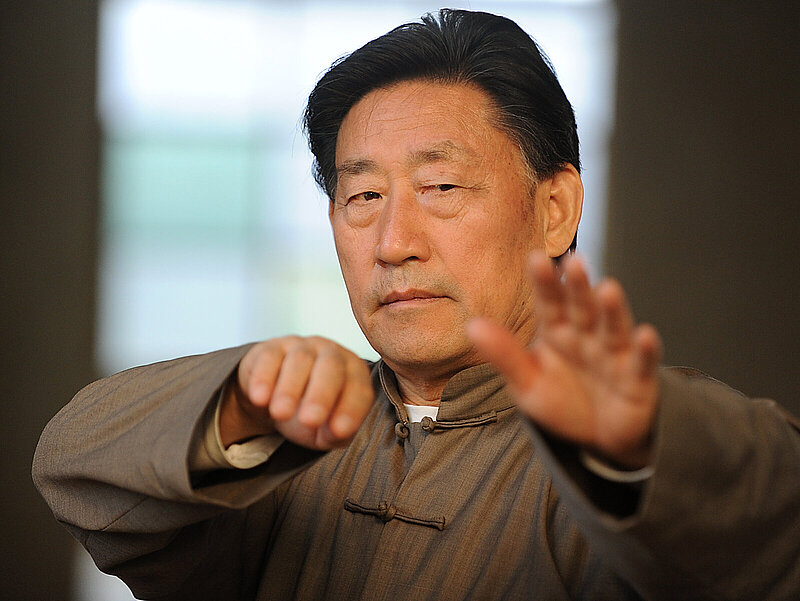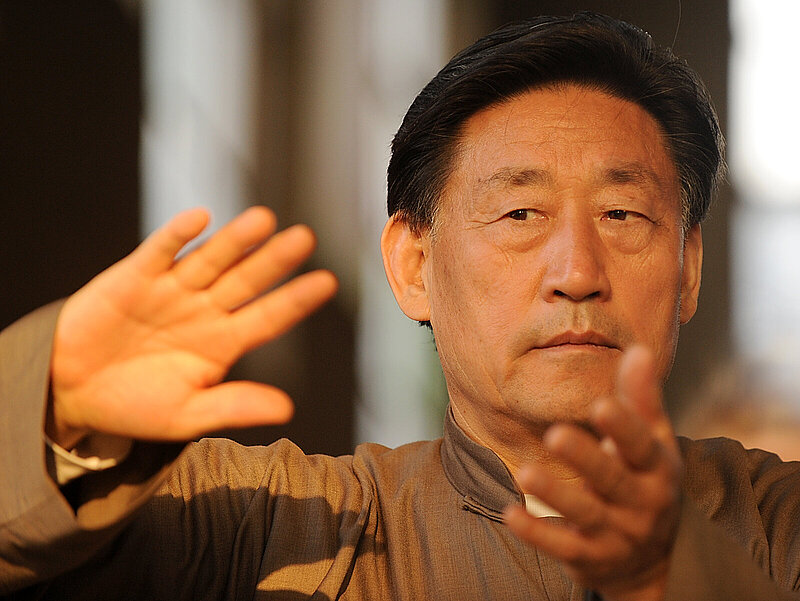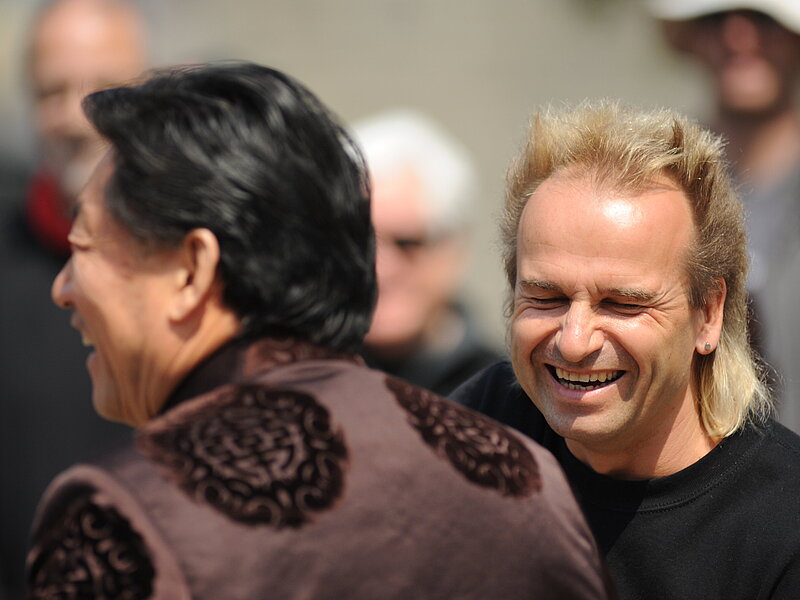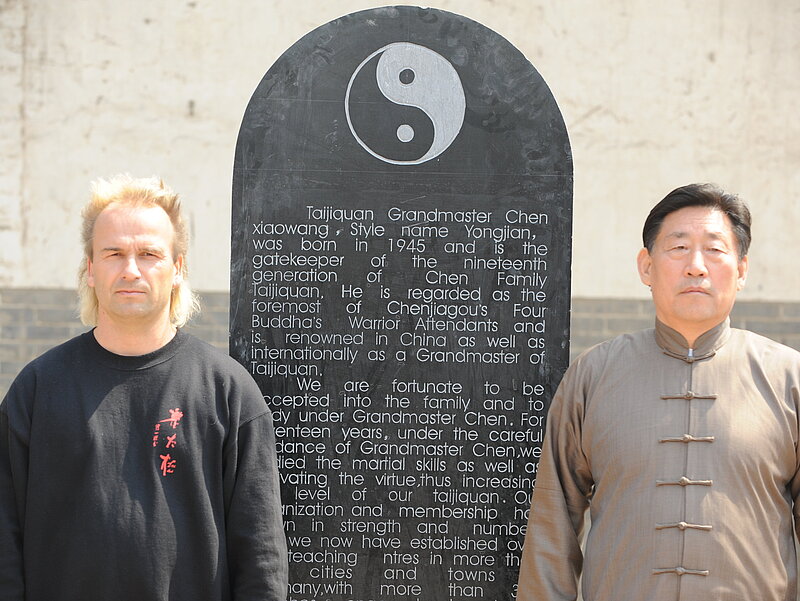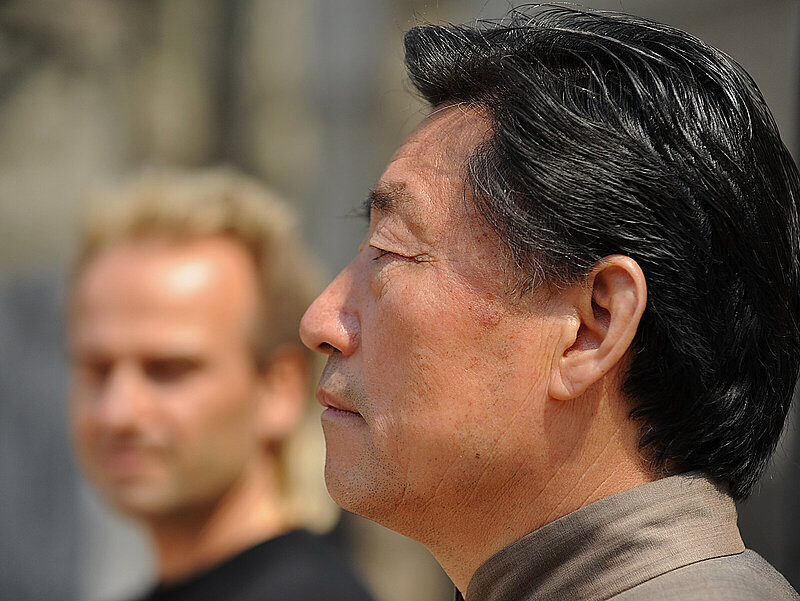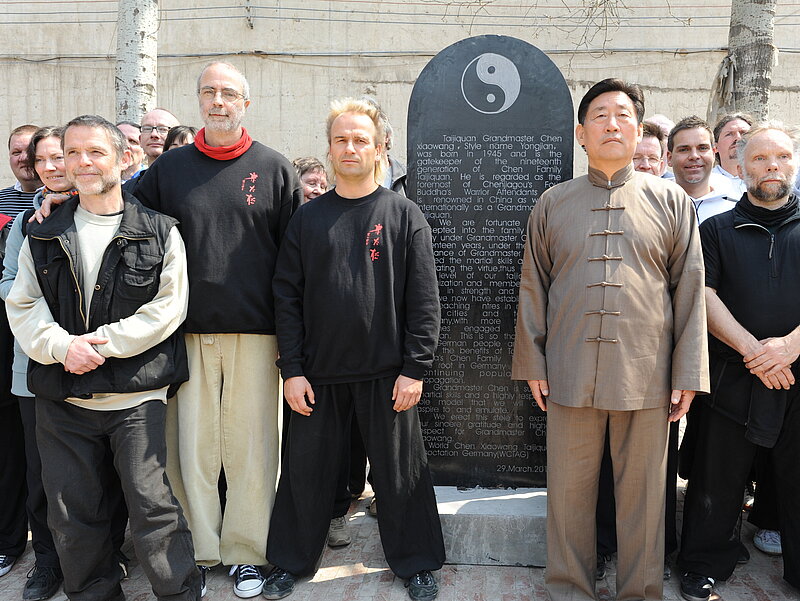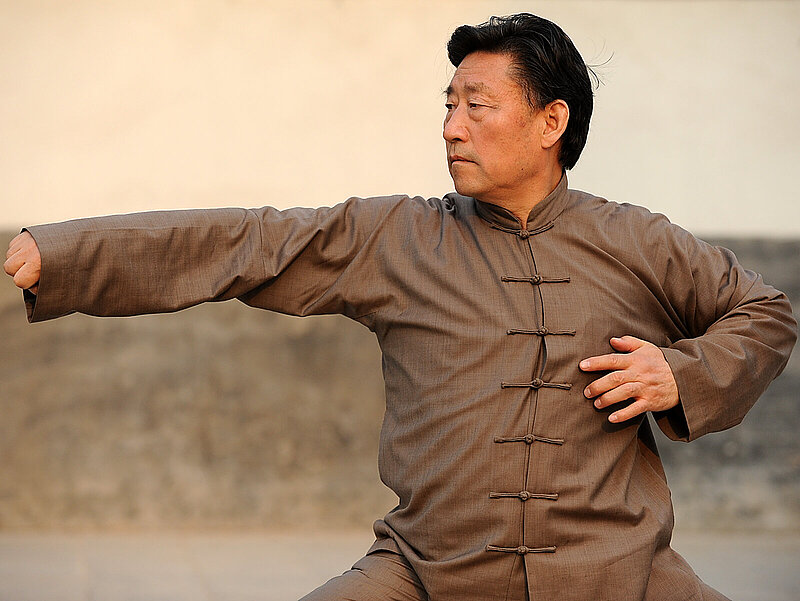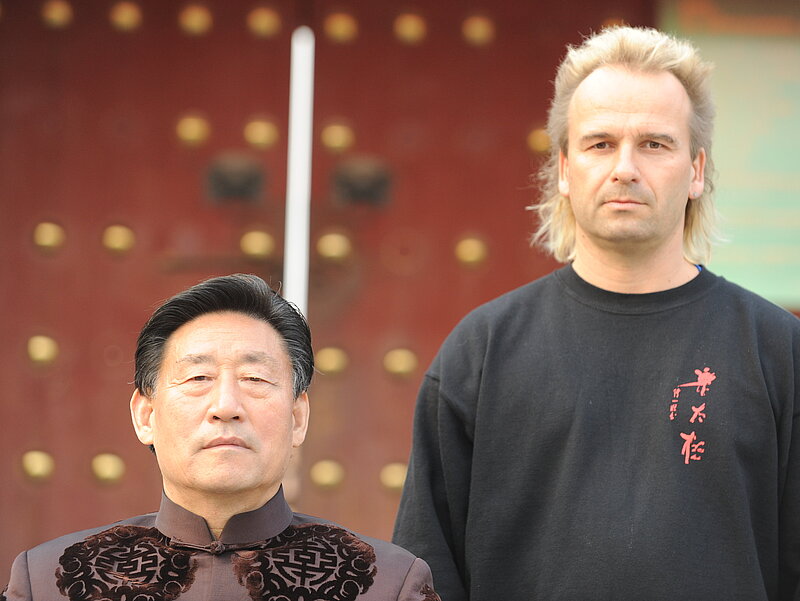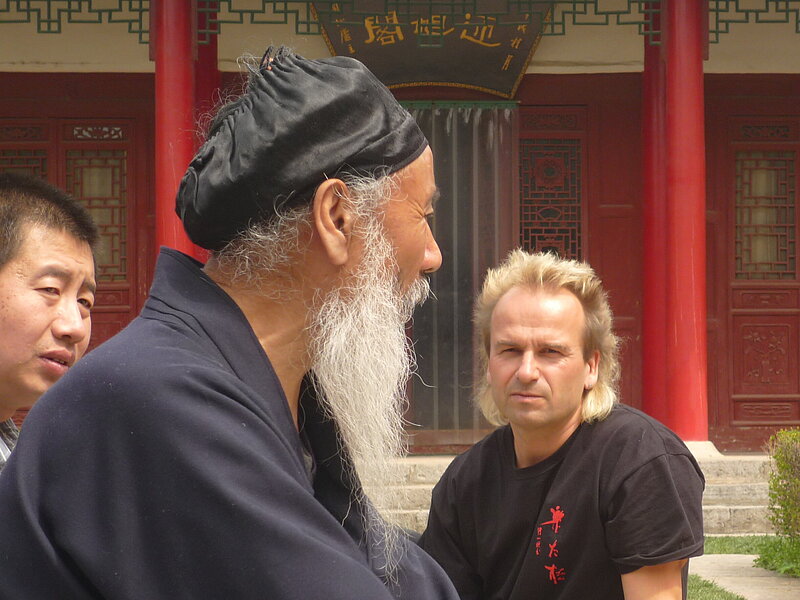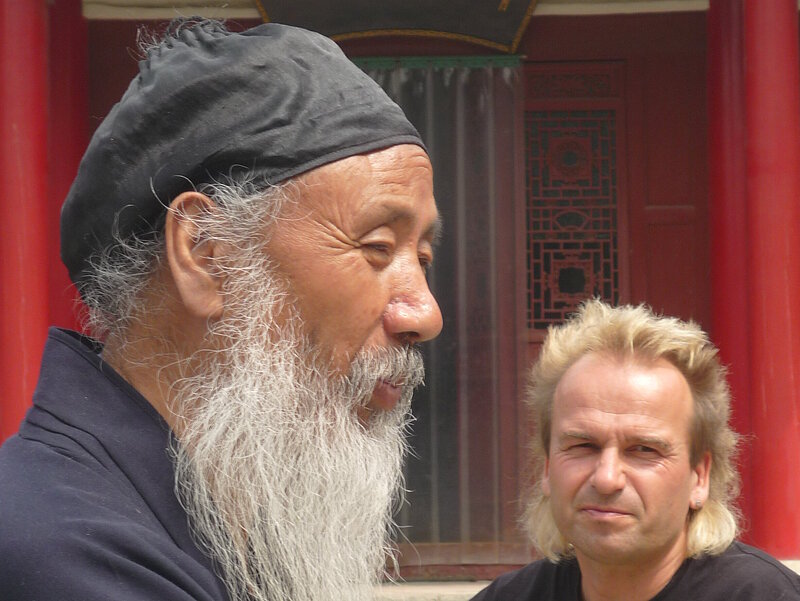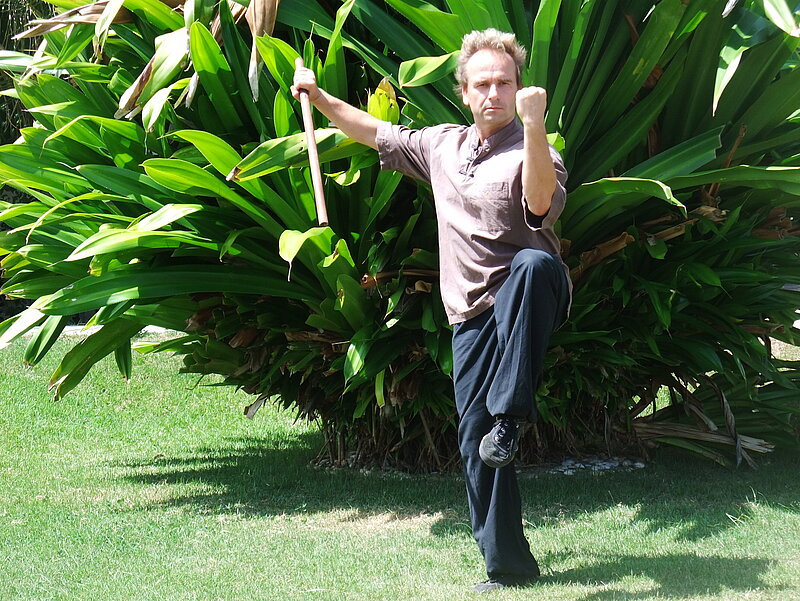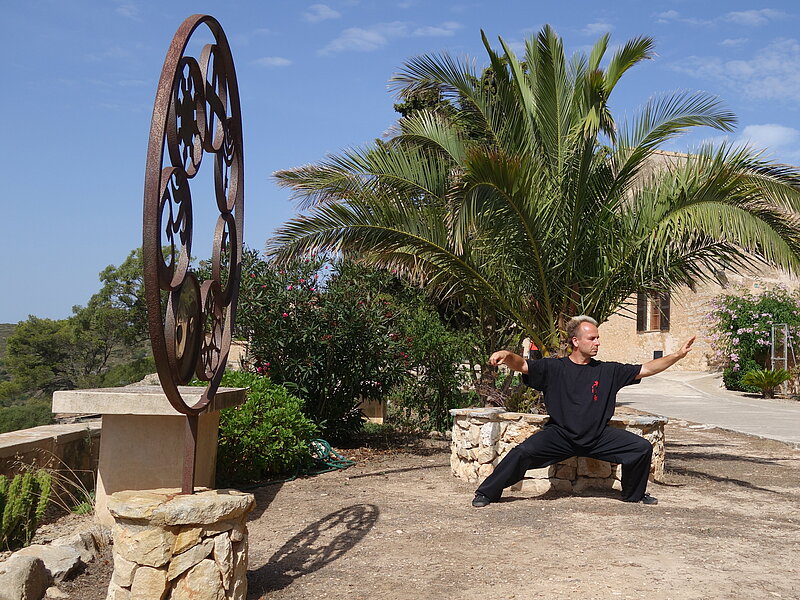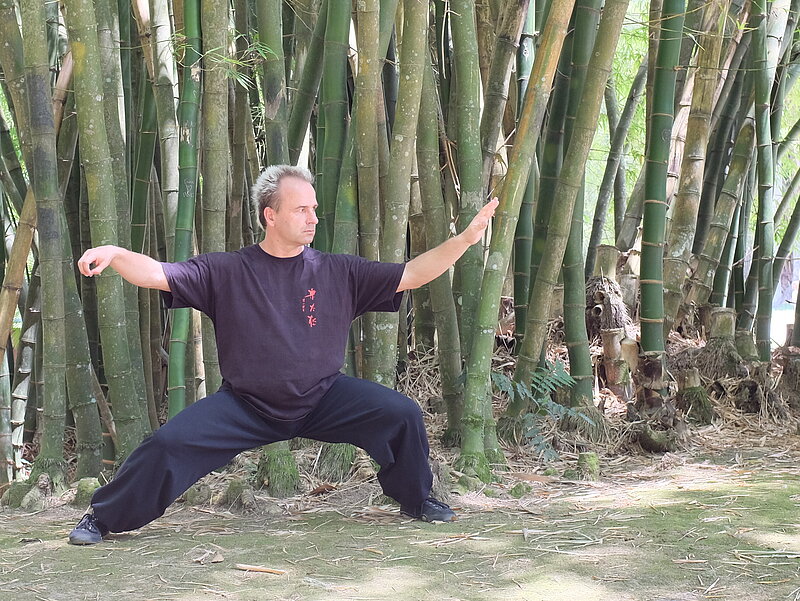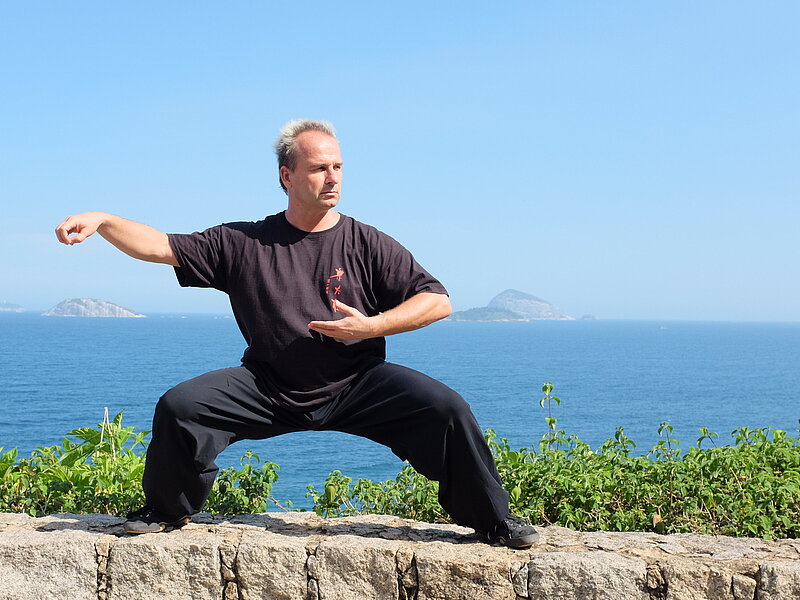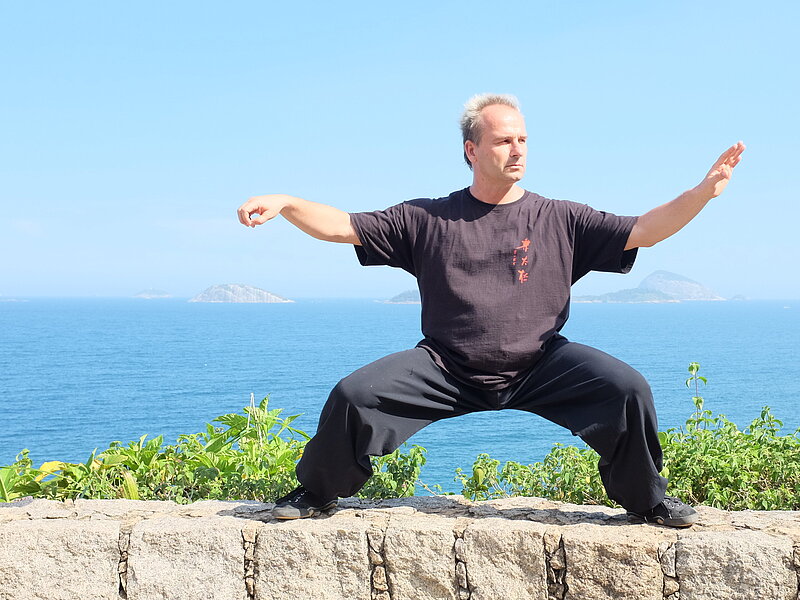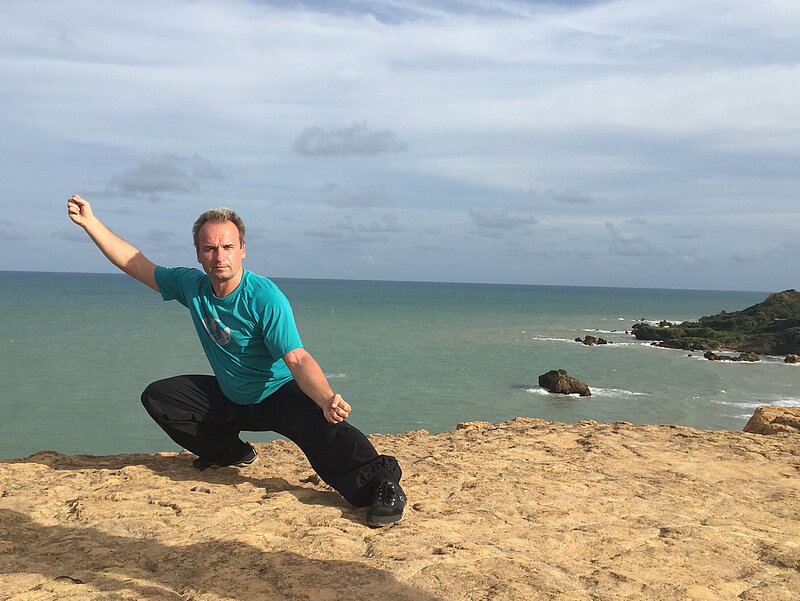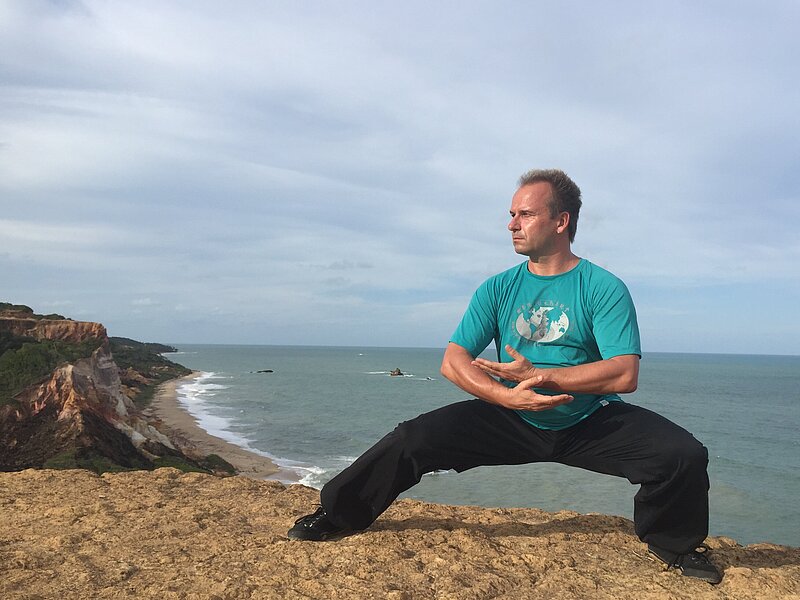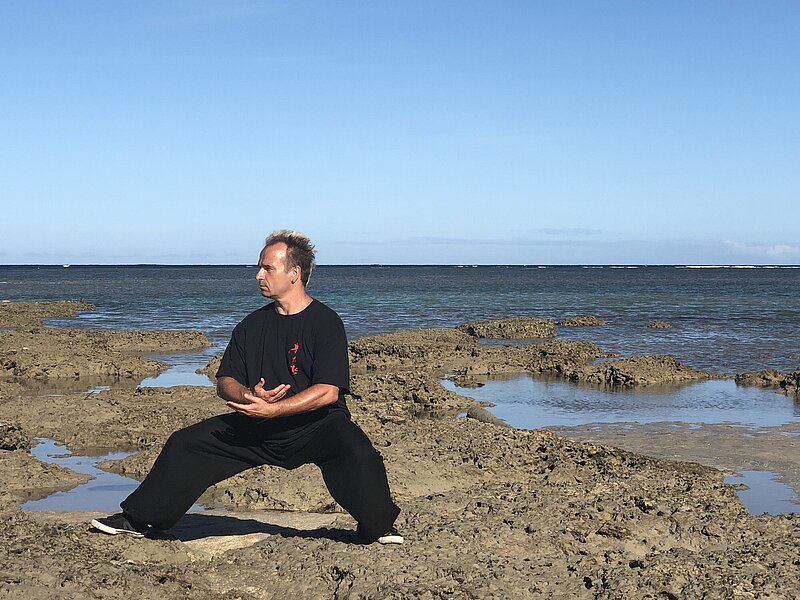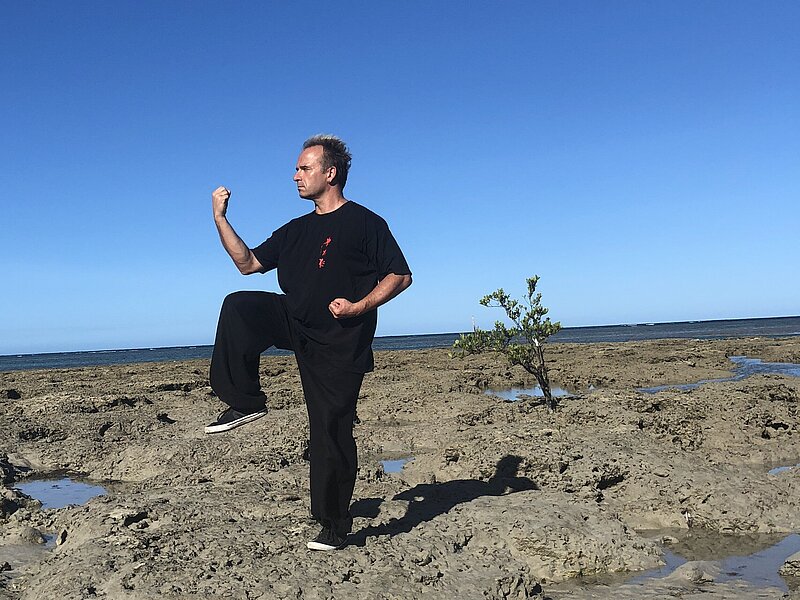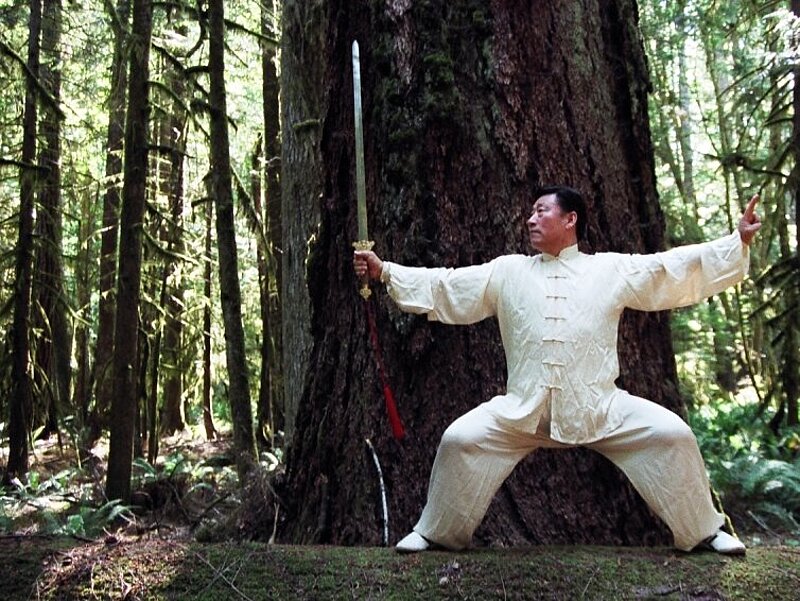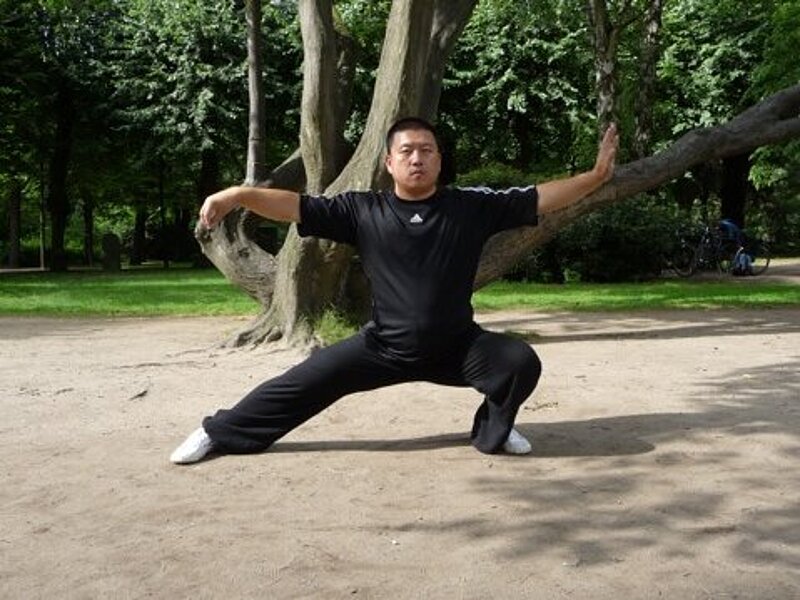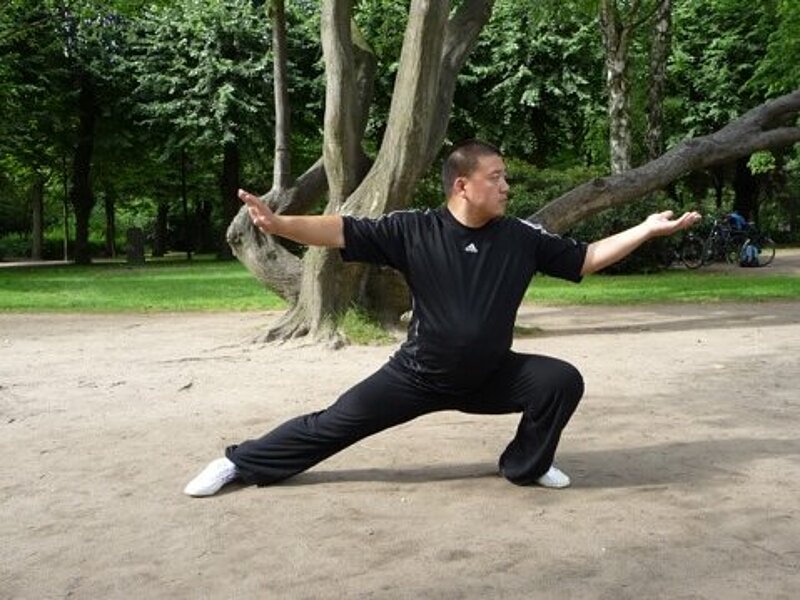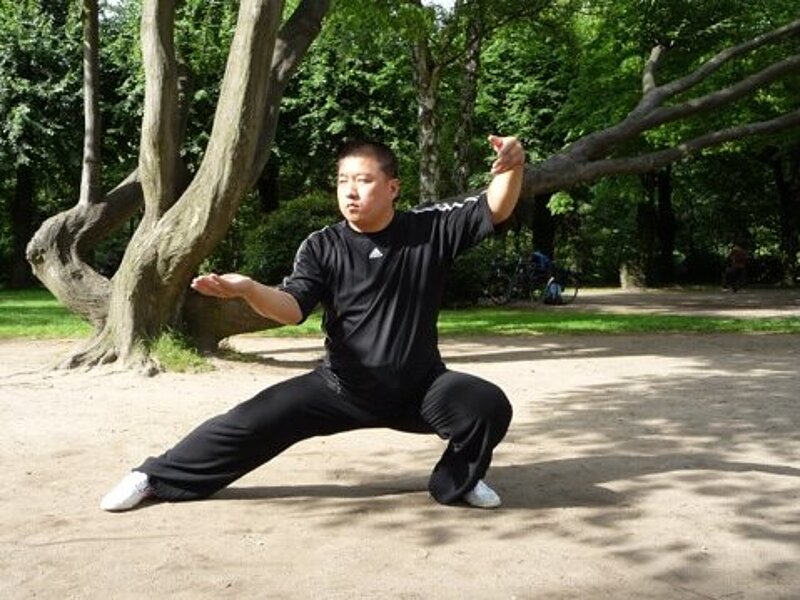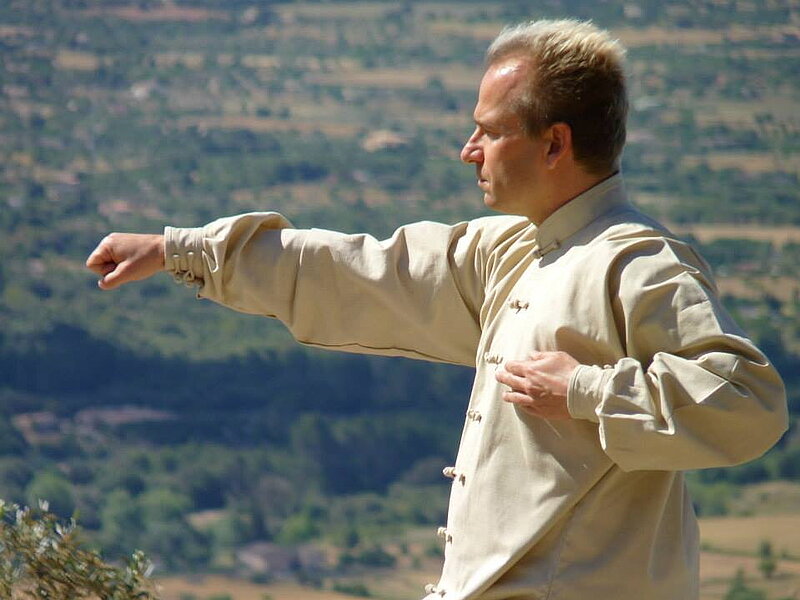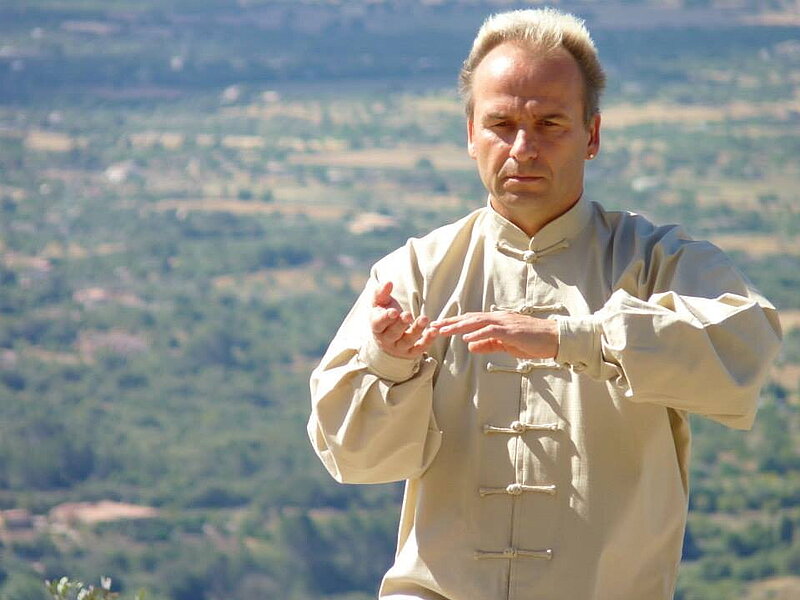The Origin of Taijiquan - the Chen style
![[Translate to English:] Statue von Chen Wangting in Chenjiagou](/fileadmin/_processed_/3/b/csm_chen_wangting_statue_a9d40a282d.jpg)
Taijiquan, which means "Tajij" as the generic term for the experience of Yin and Yang, and "Quan" (fist) as the conceptual support of a martial art. Taijiquan is one of the most famous Wushu (Gongfu) styles in China, and belongs to the large family of Neijiaquan, the so-called internal martial arts.
The philosophy of Taiji - the harmonisation of opposites - is one of the oldest on earth. Laozi says: "From the one arises the two, from the two the three and the ten thousand things." From the primordial state (wuji), the undivided, the neither being nor non-being, arises taiji, the transformation of polarities. It arises from the connection of opposites and their dependence on each other, the constant interplay of yin and yang as a symbol of this. From its infinite possibilities of combination arises everything known and unknown, that is, the ten thousand things. Whoever can act according to this natural law, it is said, can live out his natural days to the end and walk in peace and harmony on this earth. Those who go against it suffer illness and disharmony.
Taijiquan, as a martial art, teaches us to cultivate the harmony of opposites and thus to reach an old age full of contentment, as well as to be able to easily overcome aggressions that affect us contrary to this principle. It is a defensive martial art, but its character is in constant change according to the forces that act upon us. If a strong attack breaks in on us, we give in to it (yin), if the opponent loses his balance, we destroy him completely (yang). If the opponent advances, we retreat (yin), if he retreats, we follow (yang). But we always keep control. Yin and Yang alternate, surrender to each other not as we want, but exactly as nature (here the situation) dictates. Whether it is life care, health or self-defence, the principle is always the same. This is Taijiquan: the art of implementing this principle of the Supreme Last (Taiji) in combat (Quan), i.e. also in life.
Every martial art has its legends of origin. Taijiquan is no exception.
The myths tell of an alchemist from the Wudang Mountains named Zhang Sanfeng, who is said to have lived there in the 12th century. However, many books published in China after 1921 speak of a Zhang Sanfeng who is said to have lived as a Daoist priest in the Wudang Mountains in the 15th century. It is said that he observed the fight of a snake with a crane and took this as the basis for his new, soft martial art. Another story says that the legendary emperor Xuan Wu brought Zhang Sanfeng Taijiquan in a dream as a gift from the gods. However, there is no literary source before the beginning of the 20th century in which Zhang Sanfeng is depicted as a martial artist at all. The third legendary source is the writings of Xu Xuanping from the Tang Dynasty (8th century).
The historical development, i.e. how it can be historically proven, is often quite different in all martial arts. This is also true of Taijiquan.
However, in the 1930s, renowned martial artists and researchers such as Tang Hao (1897-1959) and Gu Liuxin (1908-1991) officially proved Chen Wangting from Chenjiagou to be the founder of Taijiquan. Thus Taijiquan in itself has a history that now spans more than 350 years. Of course, there have always been preliminary stages of development. Everything that exists arises from something before. There have also always been forms of fighting (Wushu) and techniques of health maintenance (e.g. Qigong). However, we only want to refer to the connection of these two aspects as we know it today as Taijiquan. Legendarily, Taijiquan is therefore just under 1000 years old...historically 350.
Taijiquan originated at the beginning of the Qing Dynasty (1644-1911) in the village of Chenjiagou of Wen County, Henan Province. Chen Wangting (1597-1664) was the 9th generation successor of Chen Bo, the founder of Chenjiagou village (Chen=family name, Jia=designation of family, Gou = literally ditch). According to the annals of the Chen family, he was considered a famous general who turned his back on society due to the change from the Ming to the Qing dynasty. Due to the change of government and the resulting decline in his honours, he recognised the impermanence of all things and withdrew to his home village. There, influenced by Daoism, he devoted himself to working in the fields, teaching the younger generation and working out the martial art that was later called Taijiquan. The following facts prove that Taijiquan cannot have originated before Chen Wangting:
- The book of the author Qi Jiguang (1528-1587), which highlighted the main characteristics of the most famous boxing styles in China at that time, does not mention Taijiquan.
- However, the five forms of Taijiquan created by Chen Wangting, the one form of Long Boxing with 108 movements and the Paochui form contain 29 of the 32 figures mentioned in Qi Jiguang's book.
- The first two figures in Qi Jiguang's book are " Fixing the Mantle" and "The Single Whip". The forms according to Chen Wangting also begin with these. Accordingly, Taijiquan cannot have originated before Qi Jiguang, but on the contrary was even influenced by him.
- Chen Wangting describes the characteristics of the pushing hands exercise which are missing in other works of renowned martial artists up to his time.
- The annals of the Chen family.
- Every master of Taijiquan of all five great Taiji schools (Chen (and Zhaobao), Yang, Wu, Wú and Sun styles) can be derived from Chen Wangting through all following generations. Chen Wangting himself, however, cannot be traced back to anyone.
Accordingly, we can call the Chen style the mother style of Taijiquan. Its historical origins lie in the period after 1644 (fall of the Ming dynasty) and before 1680 (death of Chen Wangting). Other Chinese sources place the exact origin in the 60s of the 17th century, i.e. 20 years after the change of dynasty. It is certain that Chen Wangting developed one form of Changquan (not to be compared with the present state style of modern Wushu), five routines of Taijiquan and one routine of Paochui. Since, according to Chen family sources, martial arts were already practised intensively in the generations before Chen Wangting, I have come to the conclusion after a lengthy investigation that the Changquan form is probably a form of Tongbeiquan ("Hontongbei" from Hongtong, Shanxi) with 108 figures. I justify these facts as follows: First, Tongbeiquan has been practised in the Chen family since before Chen Wangting. Secondly, there is still a form of "108 movements (Hong-) Tongbeiquan" in Hongtong County, Shanxi Province, which is said to have been carried there from Chenjiagou two generations after Chen Wangting. This comes from sources of (Hong) Tongbeiquan. The five routines Taijiquan and Paochui were later combined in the 14th generation by Chen Changxing (teacher of Yang Luchan) into the 1st form (Taijiquan) and 2nd form (Paochui).
In his forms, Chen Wangting combined the main points of the martial arts systems known to him at the time. He combined these with the techniques of Daoyin (exercises for the development of inner energy through mental guidance in connection with movement) and Tuna (breathing exercises). Many of the exercises known today as Qigong (literally: working with inner energy) are made up of combinations or parts of Daoyin and Tuna. He thus created a style that directly combined martial technique and health exercise, i.e. in one and the same exercise. Thus a system was created which promotes the development of inner and outer strength at the same time. Attention (from Daoyin), breathing (from Tuna) and movement (from martial arts) merge into one. A new, holistic system of exercises was created.
Taijiquan is considered the most widespread martial art in the world today. The reasons are certainly on the one hand the enormous versatility of this system, the possibility of improvement into old age and of course the high health benefits. However, it must be noted that by far not everyone who practices Taijiquan really penetrates this art. Especially in its implementation as a self-defence method, most practitioners are considerably lacking. However, lack of understanding and continuous simplification of the system inevitably lead to the fact that the actual depth cannot even be recognised, let alone mastered. In some cases this leads to a disregard for Taijiquan itself, or to distant developments that no longer really have anything to do with Taijiquan. Those who can actually understand Taijiquan and train in this way are inevitably fascinated by the holistic nature of this way of practising and can continue to develop in peace. The essence of Taijiquan is transformation, and so the art is also constantly evolving. But meaningful development requires an understanding of things. On this basis, real Taijiquan will be able to endure in the future.
But it is not only Taijiquan that has taken this inner principle of Taiji as its basis.
It is probably the best-known style of the so-called internal martial arts. But Xingyiquan and Baguazhang have also become known beyond China's borders. What they all have in common is the philosophy, the soul of this martial arts family: Taijiquan refers to the connections between Yin and Yang, Xingyiquan to the connection of the Five Elements and Baguazhang to the eight trigrams. The basis of all these is their common origin, the Dao and the transformational phases of Yin and Yang. All three arts, properly executed, are very effective and develop a high level of inner energy, which is a trait of inner martial arts.
Jan Silberstorff

